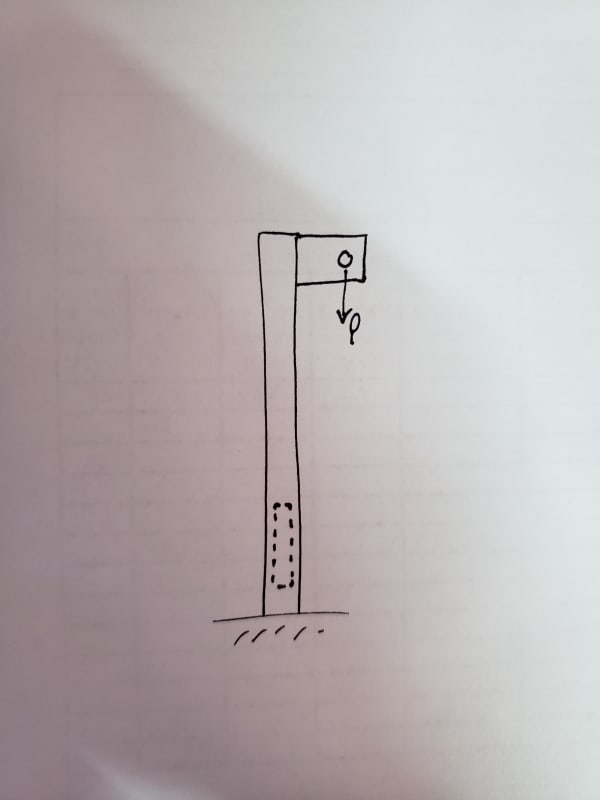UofIgrad17
Structural
- Feb 20, 2019
- 13
This is my first thread on here so I wanted to say hello to everyone and how much I appreciate the community.
I'm currently a structural engineering intern so I'm learning where real life and academia tend to clash. I'm working on a device that is going to be used to prevent falls from ladders. It is a 2x2x1/8" HSS tube with a plate welded outward from the top to give a point to attach to. The column has to withstand an axial force downward of 5k and, due to the attachment being away from the tube, it resists a moment as well. Preliminary testing showed flexural yielding in the member about 6" from it's support at 4.5k. After rechecking numbers and calcs, I realized that the member fails due to combined flexure and axial forces. The client does not want to go up a size due to weight issues, so I've thought to add rectangular bars to the sides of the HSS tube to stiffen it. My question is if I can use the nominal flexural strength calculated in Section F11 of AISC and simply add it to the nominal flexural strength of the tube itself. Similarly, use the nominal compressive strength calculated in Section E3 and add that to the nominal compressive strength of the tube. Some additional questions would be if the bar would need to span the entire length of the tube or if I could manage only having it for the section (about 18" long) of the tube that yielded during testing. I planned on stitch welding it as well. Any help would be greatly appreciated, thank you!
I'm currently a structural engineering intern so I'm learning where real life and academia tend to clash. I'm working on a device that is going to be used to prevent falls from ladders. It is a 2x2x1/8" HSS tube with a plate welded outward from the top to give a point to attach to. The column has to withstand an axial force downward of 5k and, due to the attachment being away from the tube, it resists a moment as well. Preliminary testing showed flexural yielding in the member about 6" from it's support at 4.5k. After rechecking numbers and calcs, I realized that the member fails due to combined flexure and axial forces. The client does not want to go up a size due to weight issues, so I've thought to add rectangular bars to the sides of the HSS tube to stiffen it. My question is if I can use the nominal flexural strength calculated in Section F11 of AISC and simply add it to the nominal flexural strength of the tube itself. Similarly, use the nominal compressive strength calculated in Section E3 and add that to the nominal compressive strength of the tube. Some additional questions would be if the bar would need to span the entire length of the tube or if I could manage only having it for the section (about 18" long) of the tube that yielded during testing. I planned on stitch welding it as well. Any help would be greatly appreciated, thank you!


![[lol] [lol] [lol]](/data/assets/smilies/lol.gif)